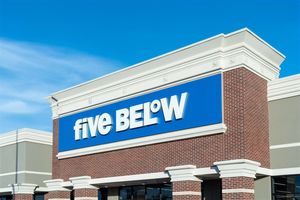
Clinical research company Medpace Holdings (NASDAQ: MEDP) announced better-than-expected revenue in Q1 CY2025, with sales up 9.3% year on year to $558.6 million. The company’s full-year revenue guidance of $2.19 billion at the midpoint came in 2% above analysts’ estimates. Its GAAP profit of $3.67 per share was 20.8% above analysts’ consensus estimates.
Is now the time to buy MEDP? Find out in our full research report (it’s free).
Medpace (MEDP) Q1 CY2025 Highlights:
- Revenue: $558.6 million vs analyst estimates of $527.1 million (9.3% year-on-year growth, 6% beat)
- EPS (GAAP): $3.67 vs analyst estimates of $3.04 (20.8% beat)
- Adjusted EBITDA: $118.6 million vs analyst estimates of $117.9 million (21.2% margin, 0.6% beat)
- The company lifted its revenue guidance for the full year to $2.19 billion at the midpoint from $2.16 billion, a 1.4% increase
- EPS (GAAP) guidance for the full year is $12.65 at the midpoint, beating analyst estimates by 2.9%
- EBITDA guidance for the full year is $477 million at the midpoint, in line with analyst expectations
- Operating Margin: 20.3%, in line with the same quarter last year
- Free Cash Flow Margin: 20.7%, down from 28.8% in the same quarter last year
- Organic Revenue rose 9.4% year on year (17.6% in the same quarter last year)
- Market Capitalization: $8.51 billion
StockStory’s Take
Medpace’s first quarter results reflected higher-than-expected revenue, as management cited both improved program progression and a rise in reimbursable cost activity as key contributors. CEO August Troendle explained that while active clinical trial programs advanced well, some of the revenue upside was due to elevated investigator-related costs, with inflation and patient scarcity driving site expenses higher. The company also highlighted an uptick in pass-through costs as a factor in the revenue increase.
Looking ahead, management emphasized the importance of backlog conversion and the overall funding environment for small biopharma clients. Troendle outlined that while the company’s revenue guidance assumes stable cancellation rates and ongoing project execution, there remains risk from continued funding challenges among clients. CFO Kevin Brady reinforced that most of the year’s expected revenue is supported by existing backlog, but cautioned that higher-than-normal cancellations or delays could impact future growth.
Key Insights from Management’s Remarks
Medpace’s management focused on explaining the underlying trends affecting both quarterly results and the outlook for the business. They provided detail on competitive dynamics, funding headwinds, and backlog progression shaping the company’s fundamentals.
-
Elevated pass-through costs: Management attributed a significant portion of the revenue upside to higher reimbursable costs, primarily driven by inflation at clinical sites and increased complexity in trial operations. These pass-through costs, which are expenses incurred on behalf of clients and billed directly to them, were higher than anticipated, contributing to the top-line beat.
-
Client funding pressures: The leadership team noted that many cancellations and project delays were tied to funding issues among small biopharma clients, which represent approximately 80% of Medpace’s revenue. Troendle described a broad impact across the client base, with both pre-backlog and in-backlog project cancellations elevated due to financing challenges and reprioritization.
-
Competitive bidding environment: Troendle confirmed that the current industry slowdown has resulted in more price competition, with an increased number of contract research organizations (CROs) participating in client requests for proposals (RFPs). He noted that clients are often inviting more CROs to bid, sometimes to seek lower pricing, which has increased the volume but reduced the quality of RFPs.
-
Backlog burn and project progression: The company discussed that improved progression of active programs contributed to higher backlog conversion rates in the quarter. CFO Kevin Brady clarified that while execution on existing projects was strong, the acceleration was not due to operational changes but more to project timing and increased reimbursable activities.
-
Headcount growth aligned to demand: Medpace maintained modest headcount growth in the quarter, with management stating that future hiring will be tied to trends in backlog growth and new business awards. They expect mid-single-digit headcount growth in the near term, contingent on improvements in the funding and business environment.
Drivers of Future Performance
Management’s outlook for 2025 is shaped by the ongoing funding environment for small biopharma clients, backlog conversion rates, and the stability of project cancellations. The company’s ability to sustain growth depends on moderating cancellations and ongoing execution of existing projects.
-
Backlog conversion supports revenue: The company expects most 2025 revenue to come from existing backlog, assuming cancellation rates remain consistent with historical norms. Management believes this provides a degree of visibility, but also acknowledged the risk that cancellations could increase if funding constraints worsen.
-
Industry funding uncertainty: Ongoing challenges in the biotech funding environment, including slowdowns in investment and reprioritization by venture capital and private equity backers, are seen as potential headwinds for both new bookings and ongoing project execution.
-
Competitive pricing pressure: Management noted that intensified competition among CROs for new projects could weigh on margins and future business awards, particularly if clients continue to invite more firms into bidding processes or seek price reductions.
Top Analyst Questions
-
David Windley (Jefferies): Asked about increased price competition and the quality of RFPs, to which Troendle responded that more CROs are being invited to bid, raising volumes but decreasing RFP quality, and that much of the competition is driven by client funding concerns.
-
Max Smock (William Blair): Probed the risk to revenue if the business climate does not improve, and Troendle stated that most second-half 2025 revenue is already "locked in" barring late-stage cancellations, but acknowledged a narrowed path for backlog growth if cancellations remain elevated.
-
Ann Hynes (Mizuho): Sought detail on cancellation rates and their drivers, but Troendle said Medpace does not disclose specific rates and described cancellations as broad-based, mainly tied to client funding difficulties and some drug failures.
-
Eric Coldwell (Baird): Inquired about the backlog burn rate and whether recent improvement was sustainable, with CFO Brady pointing to higher reimbursable cost activity and strong project progression as the main factors, rather than operational changes.
-
Jalindra Singh (Truist): Asked about the stability of backlog conversion and Medpace’s positioning versus competitors, with management stating that backlog conversion is supported by current programs and that no significant change in competitive dynamics has occurred recently.
Catalysts in Upcoming Quarters
In the coming quarters, the StockStory team will closely monitor (1) the trend in project cancellations—particularly whether funding conditions for small biopharma clients stabilize, (2) Medpace’s ability to secure new business awards and achieve a book-to-bill ratio above 1.0, and (3) the sustainability of higher backlog conversion rates. Tracking competitive pricing dynamics and any changes in trial site costs will also be important for assessing future margin trends.
Medpace currently trades at a forward P/E ratio of 23.7×. Is the company at an inflection point that warrants a buy or sell? The answer lies in our free research report.
Stocks That Overcame Trump’s 2018 Tariffs
Donald Trump’s victory in the 2024 U.S. Presidential Election sent major indices to all-time highs, but stocks have retraced as investors debate the health of the economy and the potential impact of tariffs.
While this leaves much uncertainty around 2025, a few companies are poised for long-term gains regardless of the political or macroeconomic climate, like our Top 5 Growth Stocks for this month. This is a curated list of our High Quality stocks that have generated a market-beating return of 176% over the last five years.
Stocks that made our list in 2020 include now familiar names such as Nvidia (+1,545% between March 2020 and March 2025) as well as under-the-radar businesses like the once-micro-cap company Kadant (+351% five-year return). Find your next big winner with StockStory today.





